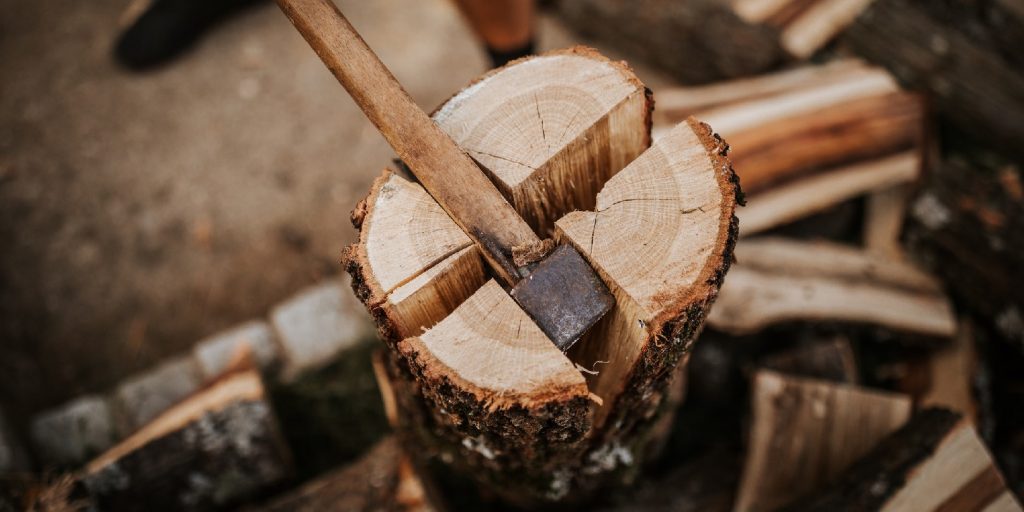What Type of Axe Is Best for Splitting Wood?

Splitting wood is a common task for homeowners who use wood for heat or various outdoor projects. Having the right tools for the job is essential, and one of the most critical tools is a splitting axe. A maul or splitting axe is ideal for larger logs and hardwoods, while a splitting maul is better for knotty or thick wood. A traditional axe offers versatility and precision for smaller logs or softer wood, and a double-bit axe is less commonly used for wood splitting. In this blog, we will explore the different types of axes available for splitting wood and help you determine which is best suited for your needs.
Splitting Axe
A splitting axe is a heavy, wedge-shaped axe for splitting wood. It typically has a long handle, usually between 28-36 inches, and a heavy head, weighing up to 10 pounds. The head is often wider and flatter than a traditional axe, with a blunt, rounded edge designed to deliver maximum force and easily split wood. The long handle provides leverage, allowing you to generate more power with each swing and split wood more efficiently.
A maul, or splitting axe, is ideal for splitting larger, hardwood logs that are difficult to handle with a regular axe. The weight and wedge-shaped head make it effective for splitting wood along the grain, allowing you to separate logs into smaller pieces with minimal effort. Due to its weight and size, it may not be suitable for smaller logs or tasks that require more precision.
Splitting Maul
A splitting maul is another type of axe for splitting wood. It looks similar to a splitting axe, with a heavy head and a long handle, but it typically has a more pronounced wedge shape with a sharper edge. The sharp edge allows the splitting maul to penetrate the wood more easily, making it suitable for splitting logs with knots or thicker boards.
A splitting maul is ideal for splitting large logs or logs with knots that may be challenging to cut with a regular axe. The sharp edge helps create a clean split, and the head provides the necessary force to split the wood effectively. Like the maul or splitting axe, a splitting maul may not be as suitable for smaller logs or tasks.
Traditional Axe
A traditional axe, also known as a felling axe or a chopping axe, is a versatile tool that can be used for several tasks, including splitting wood. It typically has a shorter handle, usually 24-28 inches, and a narrower, sharper head than a maul or splitting axe. The head is designed for cutting across the grain rather than splitting along the grain.
A traditional axe can split smaller logs or softer wood with more precision than a maul or splitting axe. Due to its smaller size and narrower head, it may require more effort and multiple swings to split larger logs or hardwoods.
Double-bit Axe
A double-bit axe has two cutting edges on the same head, with a blade on each side of the axe. This axe is less commonly used for splitting wood and is typically used in forestry or logging applications. The double-bit design allows for versatility in cutting from both sides, but it may not be as efficient or suitable for splitting wood as other types of axes.
Safety Considerations
Remember to prioritize safety when using an axe for wood splitting. Wear appropriate protective gear such as gloves, safety goggles, and sturdy footwear. Properly maintain your axe by keeping it sharp and in good condition. Always use proper technique and caution when swinging the axe to avoid injury.
Conclusion
Ultimately, the best type of axe for splitting wood will depend on your specific needs, the wood you are working with, and your personal preference. Consider the size and type of logs you will be splitting, as well as your physical ability and comfort level with different types of axes. With the right axe and proper technique, you can make wood splitting a breeze and enjoy the benefits of a well-stocked woodpile for your heating or outdoor projects.
